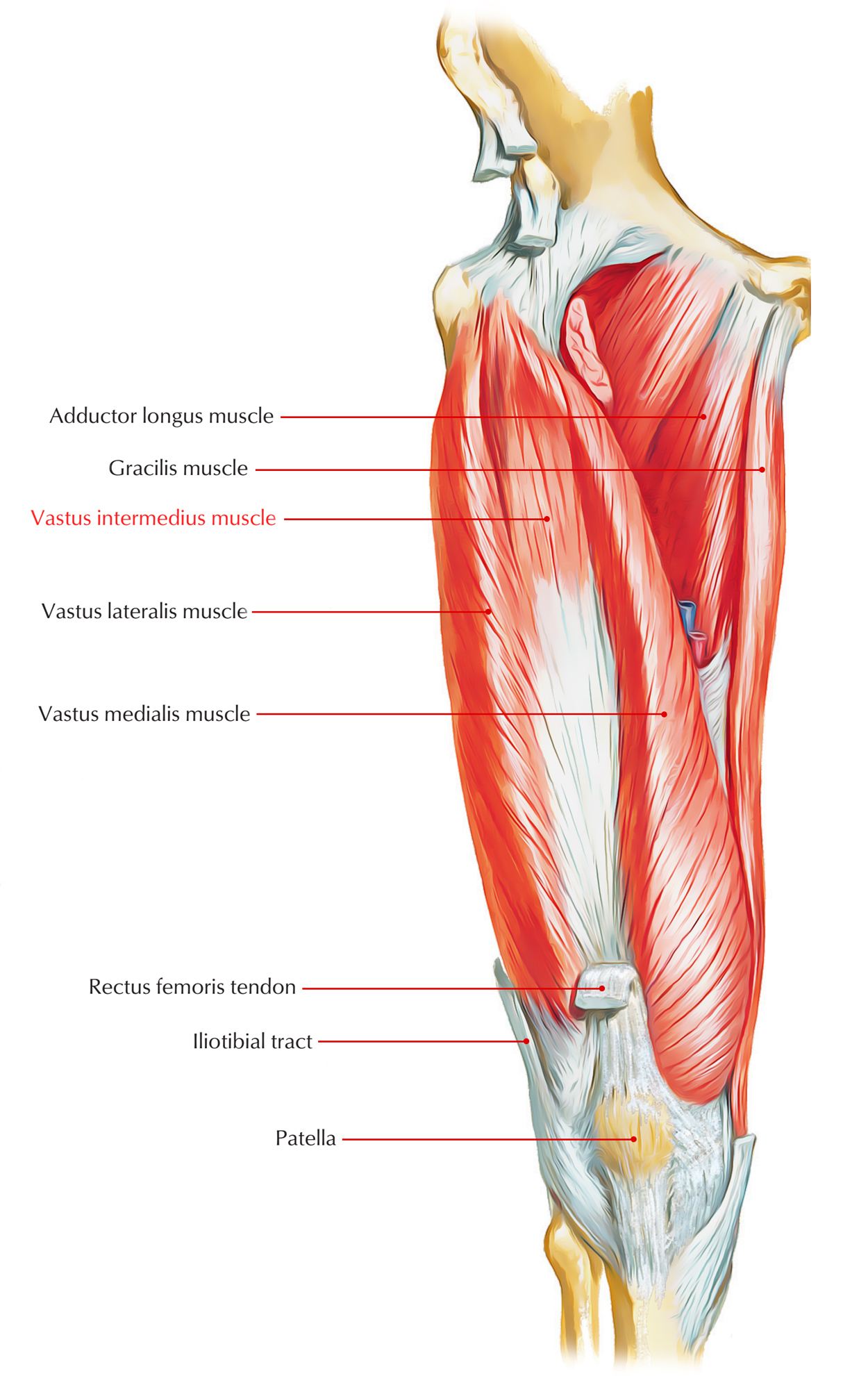The vastus intermedius muscle is located along the upper section of the femur that is also called the thighbone. This particular muscle envelops the frontal portion of the femur as well as the side of the femur. It is precisely below and terminates at the rectus femoris muscle, which belongs to the quadriceps cluster of muscles.

Vastus Intermedius Muscle
The vastus intermedius is at least as large as the rectus femoris and is located deep to it as well as partially deep to the vastus lateralis. The muscle is carefully related to the vastus medialis muscle and might look connected to that muscle. At the time the rectus femoris bends, a small space shows up in between the two muscles. The two muscles relocate an adjoining line; however each of them is still a different muscle.
Insertion
Inside the quadriceps tendon in addition to rectus femoris as well as the other vasti muscles, covering the patella, afterwards by the patellar ligament inside the tibial tuberosity.
It connects proximally to the anterior and lateral surfaces of the upper two- thirds of the shaft of the femur; it connects distally to the patella and, via the patellar ligament, towards the tibial tuberosity.
The vastus intermedius is plainly divided on its medial side by the vastus medialis, however laterally the vastus intermedius fibers combine along with those of the vastus lateralis, as viewed in cross section.
Action
Extension of the leg at the knee
Clinical significance
Pain and Symptoms Related to the Vastus Intermedius Muscle
- Pain down the middle of the front of the thigh.
- Pain grows when walking.
- Adds to weak buckling knees.
- Pain significantly increases when climbing up stairs.
- Issues correcting the knee after sitting.
- Tightness in the knee triggers a limp.
Treatment
Restorative treatments for resolving soft tissue injuries include massage treatment, manual treatment, trigger point treatment, Graston Method, or Active Release Method. These treatments increase blood circulation, reduce muscle spasms,increaseflexibility, speed recovery, as well as enhance proper tissue repair work.
When these treatments are incorporated into a treatment strategy, patients recover faster and are less most likely to have long-lasting pain or soft tissue fibrosis or scar tissue in the hurt muscle. These soft tissue treatment methods are integrated with therapeutic workout and flexibility programs.

 (47 votes, average: 4.74 out of 5)
(47 votes, average: 4.74 out of 5)